Content
Correct feeding is one of the factors affecting the yield of agricultural crops. The KAS-32 fertilizer contains highly effective mineral components. This tool has many advantages over other types of dressings. However, for effective use, many factors must be considered and the instructions strictly followed.
What is it - KAS-32
The abbreviation stands for urea-ammonia mixture. The number in the title indicates that CAS-32 contains 32% nitrogen. Fertilizer has been actively used in agriculture for over 40 years. This is due to the many advantages over other types of mineral dressings.
Fertilizer composition KAS-32
The drug contains a mixture of carbamide and ammonium nitrate in a certain proportion. These components are a source of nitrogen that enters the soil after the treatment of plants.
The composition includes:
- ammonium nitrate - 44.3%;
- urea - 35.4;
- water - 19.4;
- ammonia liquid - 0.5.
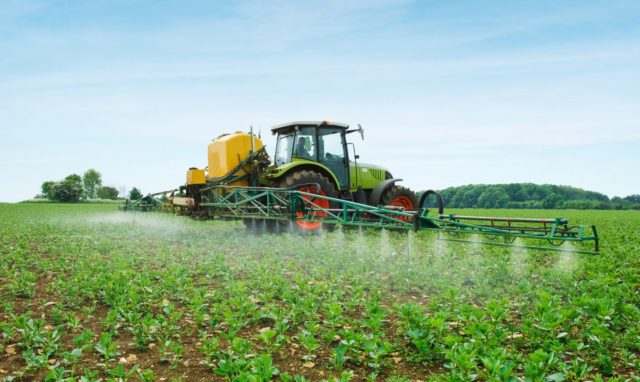
Only CAS-32 contains all 3 forms of nitrogen
Fertilizer is a source of several forms of nitrogen. Due to this composition, a prolonged action is provided. First, the soil is supplied with rapidly digestible substances. As it decomposes, additional nitrogen is released into the soil, which enriches the plants for a long time.
Fertilizer characteristics KAS-32
Urea-ammonia mixture is used in agriculture exclusively in liquid form. This simplifies the production of KAS-32 fertilizer, operation and storage.
Main characteristics:
- the color of the liquid is light yellow;
- total nitrogen content - from 28% to 32%;
- freezes at -25;
- crystallization temperature - -2;
- alkalinity - 0.02-0.1%.
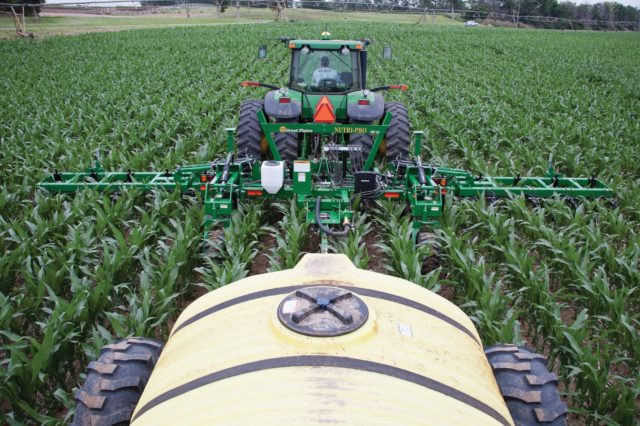
The nitrate form of fertilizer is completely absorbed by the plant root system
The loss of nitrogen during the introduction of UAN-32 is no more than 10%. This is one of the main advantages of this preparation over granular mineral dressings.
Impact on soil and plants
Nitrogen directly affects the growth and development of crops. Also, this element makes the soil fertile. The content of a sufficient amount of nitrogen in the soil ensures high yields.
Useful properties of KAS-32:
- Accelerates the development of plant vegetative organs.
- Increases absorption of amino acids during fruit formation.
- Promotes tissue saturation with fluid.
- Activates the growth of plant cells.
- Increases the rate of mineralization of additional fertilizing in the soil.
- Prevents the reproduction of pathogenic microorganisms in the soil.
- Increases the compensatory capacity of plants.

KAS-32 can be combined with pesticides and micronutrients
Crops are especially in need of additional sources of nitrogen. Therefore, the use of urea-ammonia mixture KAS-32 is advisable.
Varieties and forms of release
KAS-32 is one of the varieties of urea-ammonia mixture. It differs in certain proportions of components. There are also liquid mineral fertilizers with a nitrogen content of 28% and 30%.
KAS-32 is produced in liquid form. Storage and transportation is carried out in special tanks.
Hazard class KAS-32
Urea-ammonia mixture is capable of damaging human health. Therefore, the fertilizer belongs to the third hazard class. When using such a drug, precautions must be taken, personal protective equipment must be used.
Fertilizer application rates KAS-32
The mixture is used mainly for processing winter grain crops. The application rate in this case depends on several factors.
Among them:
- planting density;
- soil condition;
- air temperature;
- vegetation stage.
The first treatment is carried out even before sowing. This is necessary to increase soil fertility and ensure good germination of planting material. In the future, repeated feeding of winter wheat KAS-32 is carried out.
Nitrogen application rate:
- During the beginning of tillering - 50 kg per 1 ha.
- The booting stage is 20 kg at a concentration of 20% per 1 ha.
- The earing period is 10 kg per 1 ha at a concentration of 15%.
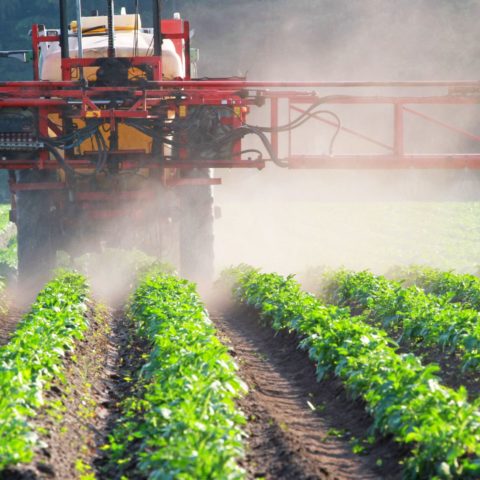
In case of cold weather, it is better to use KAS-28
Application rate of UAN-32 per 1 ha when processing other crops:
- sugar beets - 120 kg;
- potatoes - 60 kg;
- corn - 50 kg.
The use of KAS-32 in the vineyard is allowed. This procedure is only required in case of nitrogen deficiency. 1 hectare of vineyard requires 170 kg of fertilizer.
Application methods
There are several options for using the urea-ammonia mixture. Usually KAS-32 on spring crops is used as an additional top dressing. The drug is carried out by root or leaf treatment.
Also, UAN can be applied as the main fertilizer. In this case, it is used for autumn plowing or pre-sowing soil cultivation.
How to make CAS-32
The method of application depends on the period and purpose of the treatment. The planting density and the required dosage of the drug are preliminarily determined. Before processing, take into account weather conditions, air temperature and soil composition.
Recommended timing
The application period directly depends on the processing method. Root top dressing is recommended in early spring, before planting. The required dose of fertilizer is evenly distributed over the area.
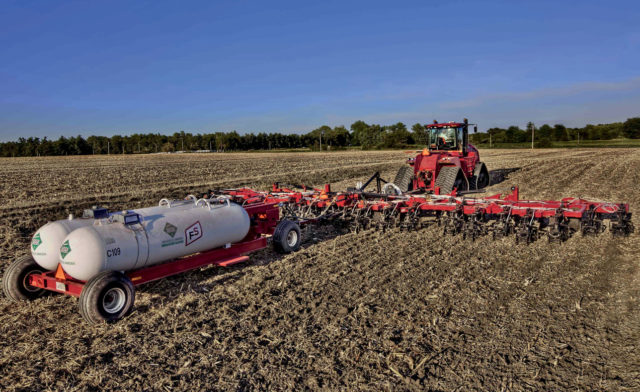
Ammonia in the fertilizer is in a bound state
Foliar dressing is carried out by irrigating the leaves. It is carried out during the active growing season - in mid-spring and early summer, depending on the characteristics of the plant. This method is also used when feeding the soil in early spring if the soil is frozen.
Weather requirements
Tilling the soil or crops should be carried out in the morning or in the evening at sunset. Solar ultraviolet light should reach the application site in minimal amounts.
Experts recommend fertilizing with KAS-32 fertilizer at a temperature not exceeding 20 degrees. This reduces the risk of leaf burns. Air humidity should not exceed 56%.
If the air temperature exceeds 20 degrees, KAS-32 is introduced in the evening. In this case, the dosage of fertilizer should be reduced by diluting the solution with water. It is not recommended to spray plants if the weather is windy.
How to breed correctly
You can apply the urea-ammonia mixture to the soil in its pure form. This allows the soil to be supplied with sufficient nitrogen for the planned seeding.
Diluted fertilizer is used for seedling treatment. The proportions depend on the application rate of UAN-32 for winter wheat or other crops. In the second treatment of crops, the mixture is diluted with water in a ratio of 1 to 4. The result is a twenty percent solution. For the third treatment - dilute 1 to 6. This is necessary to prevent burns, and also to exclude the ingress of nitrates into the grain.
Things to remember when preparing KAS-32:
- The solution must be prepared and kept in a container in which there were no other plant protection products previously.
- Fertilizer diluted with water must be mixed thoroughly.
- UAN degreases surfaces, so the processing equipment must be well lubricated.
- With sudden changes in temperature, free ammonia, harmful to the body, can collect in the fertilizer container.
- KAS-32 must not be diluted with hot water.
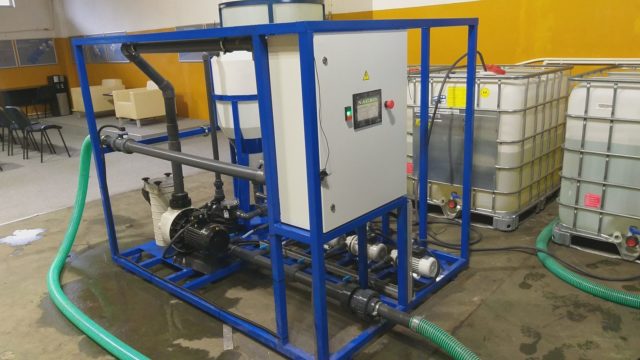
The older the plant development phase, the greater the likelihood of burns from CAS-32
The fertilizer can be combined with plant protection products against diseases or weeds. But in this case, the concentration of the active substance must be at least 20%.
How to use KAS-32
There are several options for making. The optimal one is selected taking into account the specifics of the cultivated crop, the characteristics of the terrain and climatic conditions.
The main methods of introduction:
- By irrigation into the cultivated soil.
- With the help of movable sprayers.
- Sprinkler irrigation.
- Application by inter-row cultivator.
Description and features of the use of KAS-32 in the video:
When working the soil
During plowing or cultivation of the site, fertilizer is applied by means of feeders that are installed on the plows. This allows you to shed KAS-32 to the depth of arable land.
Soil cultivation is allowed with cultivators. The minimum insertion depth is 25 cm.
When preparing a site for sowing, KAS-32 is applied undiluted. The dosage varies from 30 kg to 70 kg of nitrogen per hectare. The concentration is determined based on the content of the substance in the soil prior to processing, taking into account the needs of the grown crop.
Rules for the use of KAS-32 on winter wheat
Processing consists of 4 stages. First of all, the soil is prepared for sowing. Undiluted fertilizer is applied at 30-60 kg per 1 hectare. If the nitrogen level in the soil is above average, the UAN is diluted with water in a 1 to 1 ratio.
Subsequent fertilizing of wheat:
- 150 kg UAN-32 per 1 ha for 21-30 days of growing season.
- 50 kg of fertilizer per 1 hectare diluted in 250 liters 31-37 days after sowing.
- 10 kg UAN for 275 liters of water on 51-59 days of vegetation.
Various methods of applying UAN-32 on winter wheat are used. Usually mobile sprayers are used. Processing should be carried out at a speed of no more than 6 km / h.
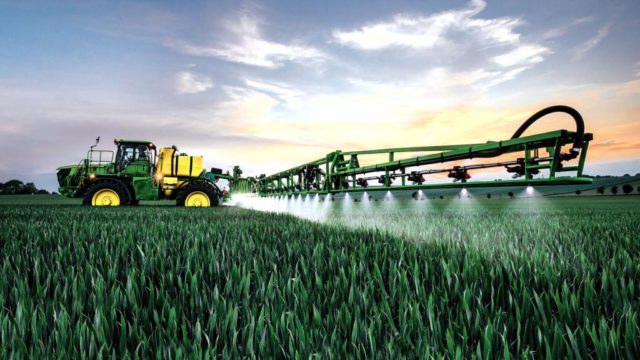
You can loosen the soil and apply fertilizer at the same time
The introduction of UAN-32 when growing wheat allows you to increase the yield by 20% or more. At the same time, plants become strong, less sensitive to adverse factors.
Application of KAS-32 fertilizer for vegetable crops
The main use case is seedbed preparation. Additional root dressing is carried out as needed.
For spraying vegetable crops, it is most convenient to use sprinkler installations and inter-row cultivators. They are used for foliar feeding of potatoes, beets and corn.
Processing is necessary when:
- drought, lack of moisture;
- sudden changes in temperature;
- during frosts;
- with low assimilation of nitrogen.
The most demanding row crop is sugar beet. It is necessary to apply up to 120 kg of nitrogen per 1 ha. The procedure is carried out until the first 4 leaves appear.After that, no more than 40 kg of active ingredient per 1 ha can be applied.
Foliar dressing of potatoes and corn is carried out only in the early stages of the growing season when the first shoots appear. Adult plants, especially during the formation of fruits, cannot be processed, since the leaves will not tolerate the effects of the urea-ammonia mixture.
Equipment for applying liquid fertilizer KAS-32
To use a carbamide-ammonia mixture, special equipment and auxiliary equipment are required. The purchase of equipment is an additional cost, however, they pay off in 1-2 seasons due to an increase in yield.
To prepare the fertilizer, you need:
- mortar units to control the proportions of components;
- storage tanks;
- solid plastic containers for transportation;
- pumps with chemically resistant assemblies;
- feeders and other equipment for soil cultivation.
Liquid nitrogen mixture equipment has a long service life. Therefore, the costs for it are justified.
Possible mistakes
The main reason for the low efficiency of the mixture or damage to crops is the wrong dosage. In the tables for the application of KAS-32 fertilizer, the consumption rates are usually indicated in kilograms. However, we are talking about the mass of the active substance contained, and not a pure urea-ammonia mixture.
Incorrect dosage calculation leads to the fact that the plant receives an insufficient amount of nitrogen. The effect of the fertilizer application decreases and the yield does not increase.
The use of a carbamide-ammonia mixture can lead to leaf burns. This happens with foliar feeding during the active growing season. The leaves turn yellow and dry out.
To prevent negative consequences, the concentration of nitrogen per 1 ha is reduced with each treatment. Fertilizer is diluted with water, and it becomes less harmful to mature plants.
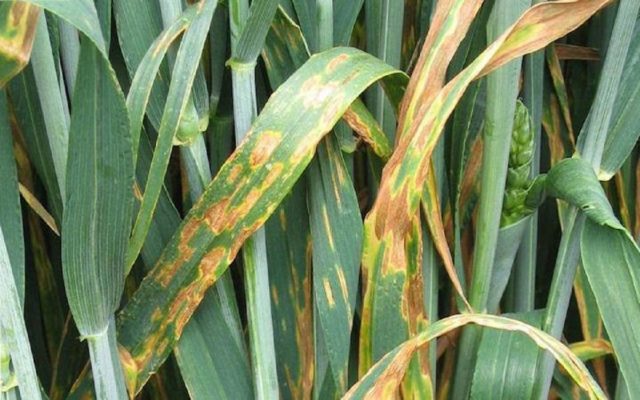
It is impossible to exceed the dosage of fertilizer, as this will provoke the growth of stems that will not yield a crop
Other common mistakes include:
- Hot weather entry.
- Treatment of plants wet from dew or after rain.
- Spraying in windy weather.
- Application of the mixture under the condition of low humidity.
- Application to excessively acidic soils.
To prevent common mistakes, you need to follow the instructions. Additionally, you need to take precautions.
Advantages of using top dressing KAS-32
The carbamide-ammonia mixture is a popular among agronomists for increasing the yield. Fertilizer is extremely beneficial when used correctly.
Main advantages:
- The ability to use in any climatic zone.
- Uniform application to the soil due to the liquid form.
- Fast digestibility.
- Long-term action.
- Possibility of combining with pesticides.
- Low cost compared to granular formulations.
The disadvantages of fertilization include the possibility of plant burns if the dosage is incorrect. For storage and transportation of the mixture, special conditions are required, which is inconvenient for owners of small private farms.
How to cook CAS-32 at home
You can make liquid nitrogen fertilizer yourself for personal use. The properties of UAN made with one's own hand will differ from the industrial one. However, it can still be used to treat plants.
To prepare 100 kg of CAS 32 you will need:
- ammonium nitrate - 45 kg;
- urea - 35 kg;
- water - 20 l.
Saltpeter and urea must be stirred in hot water at a temperature of 70-80 degrees. Otherwise, the components will not dissolve completely.
Making at home:
Precautions
When using KAS-32, a number of requirements must be observed in order to ensure the safety of work.It is also necessary to follow the rules to prevent equipment damage.
Key recommendations:
- Sprayers, pumps and accessories must be chemically resistant.
- Containers and tanks where KAS-32 was located must be thoroughly washed.
- It is forbidden to add the mixture at temperatures below 0.
- For sensitive crops, extension hoses are used to prevent the mixture from falling on the leaves.
- When preparing the fertilizer, personal protective equipment is used.
- It is not allowed to get the solution on the skin, eyes and mouth.
- It is forbidden to inhale ammonia vapors.
If after treatment there are signs of intoxication, you should seek medical help. Self-treatment is not recommended due to possible complications.
Storage rules for KAS-32
Liquid fertilizer can be stored in both solid containers and flexible tanks. It is important that they are made of materials that are not sensitive to urea and nitrate. You can use containers designed for ammonia water.
You need to fill the containers no more than 80%. This is due to the high, in comparison with water, density.
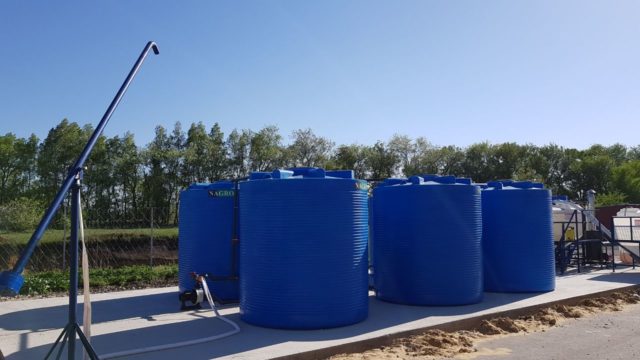
It is not recommended to fill containers with a solution of more than 80%
You can store UAN-32 at any temperature, however, prolonged exposure to heat is undesirable. It is best to keep the mixture at 16-18 degrees. The fertilizer can be stored at subzero temperatures. It will freeze, but after it melts, the properties will not change.
Conclusion
The composition of the KAS-32 fertilizer combines urea and ammonium nitrate - valuable sources of nitrogen. The drug is used to feed the soil and plants at different periods of the growing season. To apply this fertilizer, auxiliary equipment is required. KAS-32 is applied in strict accordance with consumption rates, which differ for different crops.








